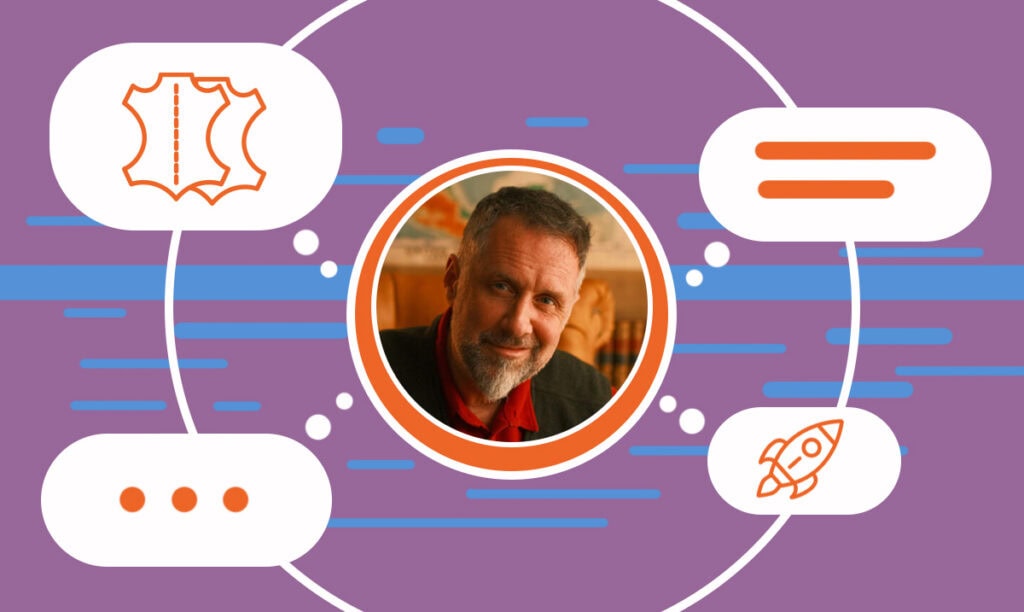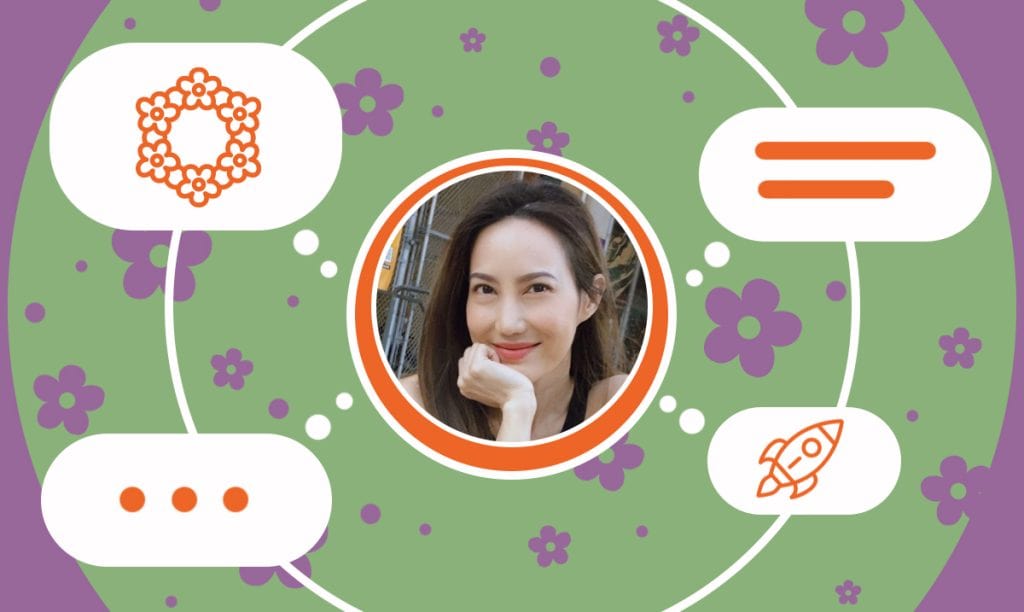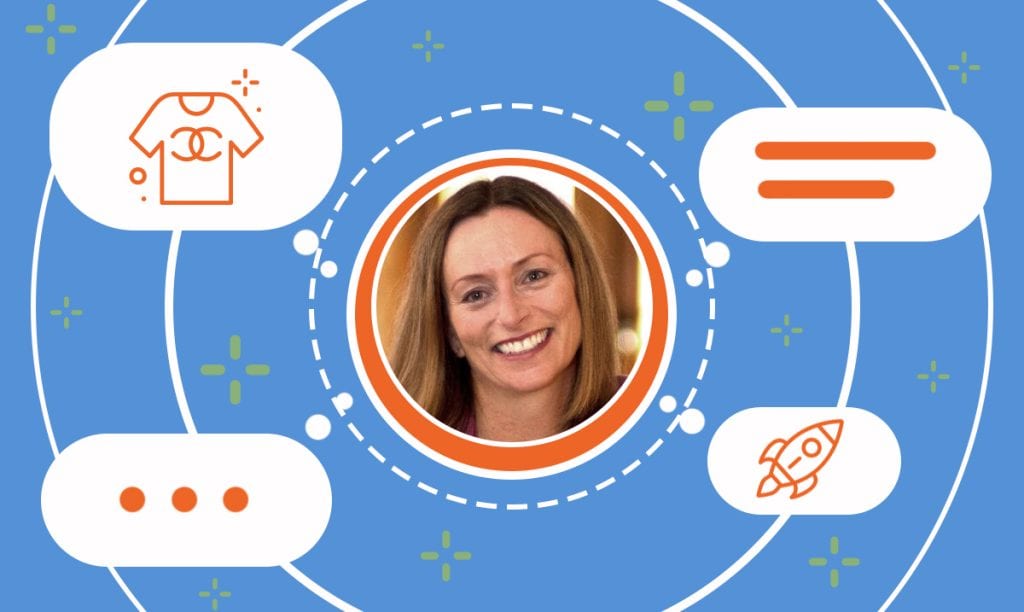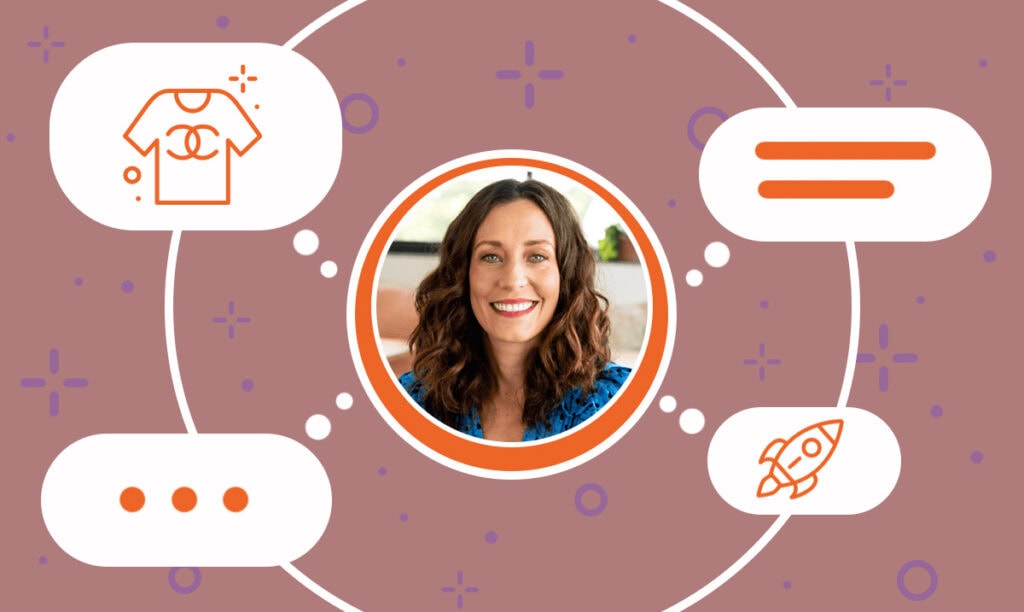In this interview, we connect with Minky Cheung, the passionate owner of Buy Hawaiian Lei. Minky’s dedication to preserving the culturalsignif ...
How Dave Munson Built a Legacy with Saddleback Leather
Written by: Carolyn Young
Carolyn Young is a business writer who focuses on entrepreneurial concepts and the business formation. She has over 25 years of experience in business roles, and has authored several entrepreneurship textbooks.
Published on May 29, 2024

Dave Munson, the CEO and visionary designer behind Saddleback Leather embarked on a journey to create the perfect leather briefcase after failing to find one that met his high standards. This quest led to the establishment of Saddleback Leather, a brand renowned for its rugged, high-quality leather bags that evoke the adventurous spirit of Indiana Jones. Alongside his wife Suzette, the chief instigator for Love 41, a line that supports various charities, Dave has built a brand that values quality and craftsmanship above all else. In this interview, we delve into the story behind Saddleback Leather, exploring the challenges, inspirations, and plans that drive this exceptional company.
Inspiration Behind Saddleback Leather
SBS – How did you identify the niche for high-quality leather goods, and what inspired you to start Saddleback Leather?
Dave – I was looking for a bag for myself and couldn’t find one I liked and the one I had in my head. I had seen different people carrying briefcases and leather bags, and the whole town in Mexico I lived in at the time was full of leather, but there was nothing I liked, so I found a guy making bags and gave him the design I sketched out, and he made it for me. Everywhere I went, people stopped me and asked me where they could find a bag like that. Apparently, there was a big hole in the market for bags like the ones that I like.
Overcoming Initial Challenges in E-commerce
SBS – What challenges did you face when you started your e-commerce platform?
Dave – For the first two and a half years, I sold on eBay. I got a website in 2005, so we moved the shop there. We grew so much in those first years. We were tripling and quadrupling (we even quintupled our sales one year), and I hired a business coach who suggested we use an ERP. In 2008, I had another friend build a website for me where we could look at our sales, average order value, click-through rate, inventory, etc. That was in 2008. That was seamless, and it helped us out a lot.
After a while, because I didn’t spend much money on the website, we had to pay for it to be redone. I looked for the cheapest way to do something, so they took out parts of the website. Later, when we needed updates, we had to recode a lot. It was a mess. You have to start somewhere, and you probably can’t spend $100,000 or $200,000 on the site right away. But if you can do it, spend more on your website, as it’ll save you money in the long run.
Balancing Quality, Craftsmanship, and Profitability
SBS – How do you find the balance between quality, craftsmanship, and profitability when it comes to your business model?
Dave – I tell people who want to start a business that they should learn all they can about the quality that goes into their industry. Geek out and learn about quality, and people will pay for that. If you’re trying to compete with China on low prices, you will lose. However, China can’t compete in terms of quality because they try to take shortcuts. They substitute leather or use lesser grades of leather, and they make their hardware almost plastic. So, if you have quality products (or services), people will pay for them.
Also, when you have more expensive products, your price can go up, but the people who can afford them are usually salaried professionals who don’t lose their jobs during recessions. In a way, you make yourself recession-proof when you have high-quality, expensive products. But if you’re selling stuff to spit your tobacco into or stuff that lower-income people would go after, they’re just going for the cheapest price.
Go for high quality, and don’t be afraid to charge more. When I first had my bags, it blew my mind that people were buying them for $400, $500, $600, and $700. However, they were thrilled with the quality and said I was underpriced.
Sourcing Premium Materials
SBS – Can you describe the process of sourcing materials for your products?
Dave – I recently designed the interior of a limited edition Toyota Tundra using really strong leather like ours. I got it about two weeks ago, and they said you want to have all of your sourcing as close to you as possible, even if it costs more. During and after COVID, we saw how supply chain disruptions can negatively affect your business, whether your stuff comes from Thailand, China, or the Czech Republic. If you don’t have a part, you have to stop working.
Leather is our most important part, and we get that locally. We own our factory in Mexico. It’s about a two-hour flight from Dallas. They have some of the finest tanneries in the world, so we have excellent leather. We have two main sources we go with, and I don’t think we can find better leather. It’s worth the price. When suppliers offer a lower price, it may be because those businesses are cutting costs somewhere. The hide costs the same amount, but they’re underpaying their employees, not paying taxes, or using inferior materials to tan your leather. Then, three years later, the leather goes from red to pink or black to gray or brown to tan because of the sun and those lesser-quality materials.
So, spend money on your primary high-quality materials — it doesn’t really cost that much more. Don’t go for the lowest price. You will regret it. I’ve done that in the past, and, oh, my gosh, it cost me so much money. Having that peace of mind and knowing that your products are going to be great feels amazing. Buy nice or buy twice is what we say.
Evolution of Marketing Strategies
SBS – How has your marketing evolved since you started the business?
Dave – We experimented with Google Ads, where you give Google money to display your ad. I have to state it in code, or the search engine will suppress the article. All the search engines will do it. After three years of spending huge amounts (up to $50,000 a month), we were cut off. We had to change our identification. Google also stopped our ads for three months.
Despite those ads, our sales didn’t change at all. So, we stopped all paid ads, and that changed everything. My marketing manager asked about other means of marketing besides paid ads. I told him to figure out beautiful, creative, cool marketing. I refused to spend money on ads. We haven’t spent money on that since 2017 because there was no return on investment, and we were, in fact, losing money.
SBS – What kind of marketing did work?
Dave – Word of mouth. I tell our marketing team about our imaginary customer. Imagine this person named Bob, who’s a brain surgeon. In his free time, he has a big superyacht and counts diamonds. It’s one of his favorite things. He’s a super wealthy guy. What can we do so that Bob tells his very wealthy friends about us? If we say, “Bob, if you refer 10 friends, we’ll give you $50 off your next purchase,” he’s not going to do that. That’s for college students. So what can we do?
We have people in our warehouse who write notes on leather. Let’s say we send one to Bob in his package. The note says, “Hello, Bob. So glad to see you. Next time you’re in from Massachusetts, come visit. We would love to have you.” Then, Bob walks around the hospital, showing his friends what he got, and they ask about it.
We also have people in our warehouse who do videos. We’ll send a three-second gif to Bob through the app called BombBomb. Someone will say, “Hey, Bob, my name is Keegan, and I wanted to thank you for getting this beautiful black briefcase. You’re going to love it. Thank you for your support. Have a nice day.” Bob will be amazed by our customer service and feel we care about him. He’ll show it to his friends. Our videos make people smile. If you make people smile, they will reciprocate and tell people about you.
We heavily educate people on quality and our industry (about hardware and thread, how to tan different kinds of leather, etc.) We do it through creative, fun videos, and people love it.
Design Approach and Customer Feedback
SBS – How do you approach your design? Do you have a designer that created your new product? Also, how much has customer feedback affected the design proces?
Dave – Henry Ford of Ford Motor Company said, “If I would have given my customers what they wanted, I would have given them a faster horse and carriage. I gave them a car. I gave them what they didn’t know they needed.”
If my design has some aspects people are constantly unhappy with enough to return the product, I change it. However, I don’t change the design for one person. There is always one person who complains and doesn’t even buy your things or says they’ll never buy from you again and will sell everything they own from you.
I do all the designing, and my wife does stuff for Love 41, which is more of the women’s line. I don’t use zippers because they break. She does, though, but high-quality ones. I design things that I personally like, and I’ve sworn off zippers, snaps, buttons, and other breakable parts. I don’t allow those, and I’ve said it publicly. Do you know how hard it is to make a toiletry bag for toothpaste, deodorant, and shaving equipment that doesn’t have a zipper? It’s tough. Duffel bag, too. You don’t want your socks and underwear falling out when you open or lift it up. These bags usually have zippers, so I had to think hard about designing without them. We’ve come up with some wonderful, old-fashioned designs like they used to be before zippers.
I recommend this to designers: If you want to design something unique and cool, give yourself a constraint, a problem, and something you’re not allowed to use. For example, you can’t have any sharp corners on a bag and must find a way to design round edges. Yes, that’s hard to do. Or, for example, we won’t allow anything unnatural in our products — no polyester strips for reinforcement. Whatever you do, if you give yourself a limitation, it’ll inspire a lot of thinking, but it’ll force you to separate yourself from everyone else.
If you make things you like, all you have to do is find other people with the same taste. Use those things you make. I used my first bags for men for a few years before I started selling them. I kept improving the design with each bag. Think about this: If you had to go to another planet and take your ideal bag, what would it look like, and what would it be made of? Build it for life. Build it so that one day it’ll be in a museum. Think about each design as if you were making it for yourself. Would you take shortcuts on your own gloves or shoes? No, you would make them as long-lasting as possible. So, do the same for the things you create for other people.
Logistics Management
SBS – How do you handle logistics for US and international orders? Do you have providers you work with all the time?
Dave – Here’s what I’ve found: If you’re going to go for the best (lowest) price, and you don’t maintain a really good long-term relationship with people, then you’ll end up paying for it later. I buy my tires from a place called Discount Tire. They have great service and normal prices. I’ve had problems with their tires in the past, and they looked at my history and saw I’ve been buying from them since 2003 for different vehicles. In those instances, they took those tires back or replaced them for free.
We use UPS to ship our products, and we negotiate the prices. Some people are very loyal to FedEx, but UPS can match anything that FedEx or any other delivery service offers.
On a profit and loss statement, you have your sales on the top line, and then beneath that, you have all your expenses (leather, salaries, payroll, shipping, website, software — the things it costs you to sell the top line). If you deduct all those expenses and all that it costs from your top line, then on the bottom line, you see how much profit you have. That’s all that matters in a business. If you don’t have money at the bottom line, then it’s just a hobby. What you need to do is have a higher percentage. The higher the rate at the bottom line, the better.
Let’s say that percentage is 20%. Let’s say you sold a million dollars of merchandise. It costs you $800,000 to sell that with your salary and materials, and then you have $200,000 on the bottom line. Now, if you look at your top three expenses, those are the biggest. If you can save 1% on your salary, now, instead of 20%, you have 21%. If you can save 2% on your materials, you have 23% profitability on the bottom line. Every percent you add, you deduct from your expenses.
You can do two things when it comes to shipping, materials, or anything else. For materials, you can negotiate the price or cut better. You lay a hide down, and instead of a 70% cutting, where 30% remains in little pieces and ends up in the trash, you can increase to 75% or 77%. So, if you’ve lowered your material cost by 10% and saved 10% on leather, you have another 10% or 20% on your bottom line.
Handling Returns
SBS – How do you handle returns?
Dave – We have a 30-day return policy. Our customers pay for return shipping. We used to pay for all the shipping (free shipping plus free returns) because we wanted to compete with Amazon. If someone bought five bags and kept four, we had to pay $25 per bag, so all of our profit was gone. If you’re a seller, don’t offer this.
We changed three years ago. If you have a product that everyone else is selling and if everyone else offers free shipping but you don’t, people will buy from everyone else but you. However, if you have something unique that people want, they’ll still buy from you. When we took away free shipping, our sales didn’t change. We ended up having more profit at the end of the year because of that expensive shipping, and that money went to the bottom line.
Future Vision and Expansion Plans
SBS – How do you see the future of your company? Are you planning an expansion or new products?
Dave – Right now, we have bags that Indiana Jones would carry as a professor or archaeologist. These bags are very high quality. However, some people wear nice suits to a board meeting, and they say they need a cleaner bag, not one that looks rugged, tough, and weathered. They want more professional-looking stuff that still looks tough — like Daniel Craig’s James Bond. Daniel Craig is a tough James Bond. He bleeds. He has cuts on his face for the whole movie. That’s what we’re moving into — a little cleaner but still tough and strong bags.
Rolls Royce put us into a big coffee table book. Filling 350 pages of cars is hard, so they put in companies that care about excessive-quality and beautiful design. We went to the event, and there was a man walking by. He was 35–40 years old. He had a really nice suit on, really nice shoes, and he had a cheap briefcase. It was like his first briefcase out of college, and it made me think that he had borrowed the suit. Why would a self-respecting man have a cheap-looking, low-quality briefcase given to him at a conference? So, a bag needs to bring you joy, but it also has to be appropriate for the age and the situation. A lot of people have different briefcases for different situations.
There’s one last thing. I tell people they must be themselves. Don’t be afraid. Don’t be vanilla. Stand for something. Vanilla is a nice flavor, but it’s even better when you add chocolate chips, caramel, or something else. It’s great when you are yourself and have confidence enough to be yourself. Let your customers know who you are; if they like you, they will buy from you. They want to buy from a person, not just a corporation.
At Christmas, I posted the Christmas story from Luke Chapter Two in the Bible on social media and our newsletter — God loved us so much that he sent his son to earth. At Easter, we tell the story that Jesus paid for our sins so that we wouldn’t have to pay for them, and after three days, God raised him from the dead, and now we can be with him forever in heaven. He loved us that much. I tell that, and I get criticized for doing it. Some people ask why I added religion into this and say they’ll never buy from me again. Others see that I’m confident and stand for something.
I also stand for my family. I sometimes give marriage advice because I have a great marriage (the book Love & Respect is an amazing marriage book). We also talk about parenting and these different things I care about because I’m trying to help my customers. That story, Christmas and Easter, has changed my whole life. Why would I hide that from someone? Imagine I had a glass of the cure for cancer. If I felt that it helped me and it fixed my illness, would I want to hide that from somebody? No, if it could help someone else, I want to share it with them.
Don’t shove things down people’s throats, but let them know what matters to you and what has helped you in life. Maybe it will help someone, or maybe it won’t, but they will sense that you care about them. It’s really important that you genuinely care about other people. If you don’t care about others, you only care about your bank account and how impressive you are to people. Life is going to be very hard on you if you don’t care about other people and or if you care more about yourself than you do others. You will learn that lesson later after going through a lot of misery.
Subscribe to Our Newsletter
and gain insider access to cutting-edge business insights and trends.
Featured Resources

How Buy Hawaiian Lei Preserves the Art of Lei Making
Published on October 11, 2024
Read Now

How to Launch a Fashion Collection: Advice from Sarah Shaw
Published on August 26, 2024
Meet Sarah Shaw, a force of knowledge and experience in the fashion industry. As a seasoned fashion entrepreneur, product designer, business coach,a ...
Read Now

How to Build a Successful Fashion Brand from Alice James
Published on July 1, 2024
Alice James, the founder of AJG Fashion Consulting, has turned her extensive experience in the corporate retail world into a thriving businessdedica ...
Read Now
Comments